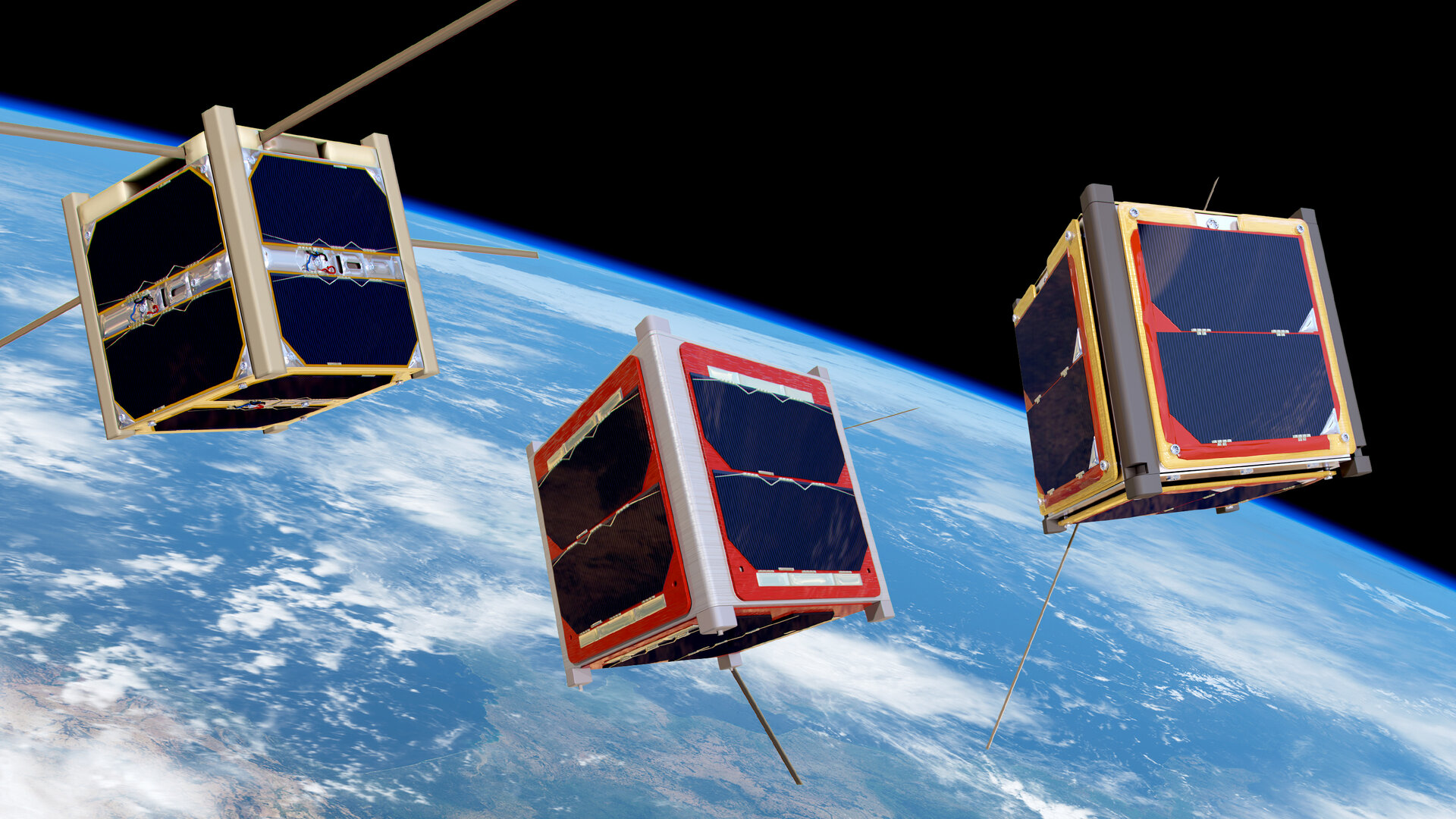
By Chakad Ojani
It’s late April. We’re standing in Hans’s office at the Space Campus a few kilometres outside the subarctic city of Kiruna, northern Sweden. The sun enters through the window, yet outside the meter-high piles of snow persist, and they will do so for several weeks. Hans has just described to me the many Lego Space and Star Wars model sets that he has shipped from his previous office in the U.S. and placed inside a series of glass display cases: the International Space Station, the Saturn V (one with the Skylab and one without), NASA Space Shuttle Discovery, several TIE fighters – you name it, he’s got it all.
Hans turns off the lamps inside the display cases using a remote, inviting me to take a seat opposite to him. A 3-D printed model of a CubeSat sits between us on the round, wooden table. As a professor of Space Systems, this is a topic that Hans is particularly excited about, and in our conversation he points out that miniaturisation is one of the driving factors behind the ongoing expansion of Sweden’s rocket launch site some 36 kilometres away; with the development of smaller and more affordable satellite technology, as well as a growing demand for launch services, the state-owned Space Corporation wants to take the lead in Europe, albeit not without competition from a couple of equally determined actors in the region.
 A 3-D printed CubeSat model. Photo by author.
A 3-D printed CubeSat model. Photo by author.
My interlocutor sees immense innovative potential in the emergence of CubeSats and small satellites more generally. I learn that this potential is mainly indebted to standardization, modularity, and size, which helps lowering the costs of both construction and launch. But, as a university teacher, Hans is also thrilled about their pedagogical function. As he explains to me, his students can now follow the entire cycle within the span of their master’s programme: from design to construction, and perhaps even launch and data analysis. This was unlikely only a decade ago.
…
I’m a few months into my fieldwork in Sweden when I write this blog post. Conducting research in Kiruna and Stockholm, I have had the chance to meet a wide array of people, the majority of whom are passionate about everything space related. They point me in a myriad of directions, all equally intriguing, but some more recurring than others. In this short text, I wish to focus on one such trajectory; namely, the allure of miniaturisation that often surfaces in my conversations with Hans and his colleagues in Kiruna, as well as in interviews with other engineers and enthusiasts. Like Hans, they frequently draw my attention to the connection between the smaller dimensions of CubeSats and the considerably shorter time needed between drawing board and orbit. With the standardisation of CubeSats and small satellite components, engineers are no longer dependent on extensive, protracted projects involving several different experiments or instruments. Instead, a company or group of engineers can simply design their own satellite constellation and have it placed in orbit within the matter of only a couple of years.
It’s all very captivating, and it makes me wonder what might satellite and sub-system miniaturisation tell us about smallness as a powerful, Euclidean cultural trope more broadly?
I’m tempted to turn to the work of Anna Tsing, who has written extensively on scaling and scalability. Scale, Tsing explains,
“is the spatial dimensionality necessary for a particular kind of view, whether up close or from a distance, microscopic or planetary. I argue that scale is not just a neutral frame for viewing the world; scale must be brought into being: proposed, practiced, and evaded, as well as taken for granted. Scales are claimed and contested in cultural and political projects” (Tsing 2000a: 120).
Accordingly, and as Nick Seaver (Seaver 2021: 527) alerts us, “[w]e should be wary […] of making claims about scale as though it were simply an objective phenomenon”.
While Tsing (2000b; 2012) has directed critique at scalability for its tendency to alienate, exclude, and exert violence, here I wish to tap into this long-standing anthropological sensitivity to scale and suggest that we also attend to the allure of smallness in pursuits of macro effects. For, according to my space enthusiast interlocutors, this is what satellite and subsystem miniaturisation ultimately promises to deliver. Globe-spanning satellite constellations, I’m often told, will augment our capacity for planetary stewardship – not least by helping us address a number of contemporary challenges, for instance forest fires, illegal logging, war crimes, and climate change. The question that arises here is what will hold everything together? What larger-scale configurations will help unleash the potentialities of the small, not to mention sustain them and make sure they keep being actualised?

Artist’s impression of CubeSats orbiting Earth. Source: ESA.
Allow me to draw a parallel. In his book Space Settlements, Fred Scharmen (2019) investigates the connections between architectural proposals for life in space and architecture and the built environment on Earth. Among his examples is the Nakagin Capsule Tower in Tokyo. In brief, the tower, which is emblematic of Japan’s postwar Metabolist architecture movement (see Gardner 2020), consists of 140 small capsules, each functioning as a minimalist home. Like CubeSats, these pods were designed with mass production in mind. Following a modular logic, they could be combined to create larger spaces and promised remarkable flexibility in terms of mobility:
“Apartment tenancy, in this scheme, might mean ownership of a unit plugged into a framework of infrastructure and services that could simply be unplugged and transported to a different frame in a different city if the owner decided to move” (Scharmen 2019: 296).
Alas, in 2021, some 49 years after its construction, it was confirmed that the tower was to be disassembled due to disrepair (Block 2021). The flexibility promised by minimalism and decentralisation required a large-scale infrastructure comprised not only of massive frames, placed in different cities and onto which these capsules could be bolted, but likewise a system of repair and maintenance, among other things. Lacking this, the structure has slowly disintegrated after serving as hotel, storage, and rental units.
 Nakagin Capsule Tower, designed by Kisho Kurokawa in 1972. Source: Wikimedia Commons.
Nakagin Capsule Tower, designed by Kisho Kurokawa in 1972. Source: Wikimedia Commons.
Smallness, then, does not come without demands on something of a larger scale, something to ensure that the trope of the small can maintain its appeal and efficacy. So, again, what kind of order will the proliferation of small satellites in orbit require and bring about? What kind of infrastructure will hold it all together?
…
Before leaving his office, I take a quick, second look at the Lego Space miniature sets inside Hans’s display cases. Indeed, there is a particular allure to them; they speak of big things.
References
Block, India. 2021. “Nakagin capsule tower to be dismantled and turned into rental accommodation and exhibits”, dezeen, 16 July. https://www.dezeen.com/2021/07/16/nakagin-capsule-tower-dismantled-news/.
Gardner, William. 2020. The Metabolist imagination: Visions of the city in postwar Japanese architecture and science fiction. Minneapolis: University of Minnesota Press.
Scharmen, Fred. 2019. Space settlements. New York: Columbia University Press.
Seaver, Nick. 2021. “Care and scale: Decorrelative ethics in algorithmic recommendation”, Cultural Anthropology 36 (3): 509-537.
Tsing, Anna. 2000a. “Inside the economy of appearances”, Public Culture 12: 115-144.
Tsing, Anna. 2000b. “The global situation”, Cultural Anthropology 15: 327-360.
Tsing, Anna. 2012. “On nonscalability: The living world is not amenable to precision-nested scales”, Common Knowledge 18: 505-524.

